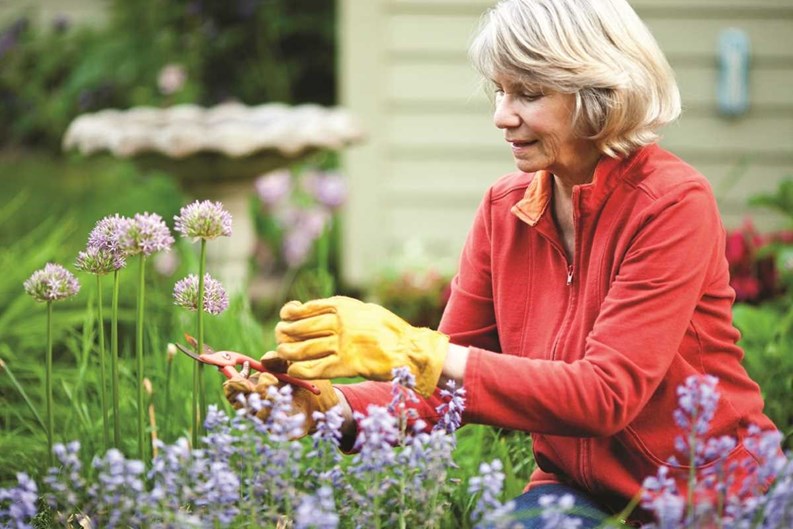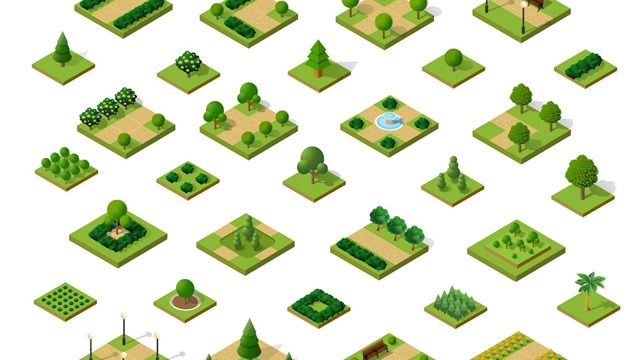While it is common for buildings or associations of any size to have designated committees in place to help boards and management handle aesthetic, social, and other community concerns, “green” committees are a more recent trend…though, one that is gaining traction all over the country as environmental consciousness is raised.
Recycling, energy and water conservation, composting, and improving landscaping techniques and methods are just a few of the things green committees may devote to, and frequently, there are local and state-sponsored organizations and resources to help them achieve their goals.
Going Green
Two decades ago, no one knew the term “green committee.” Similarly, the case was not made that properly designed landscaping could save money by helping the environment. Change of this kind begins with early adopters. This is also how green committees tend to get their start in HOAs.
“Usually, there’s one person who has a strong ethical reason for doing it, and they’re trying to convince everybody else—who couldn’t care less about the ethics—and just want to make sure that they spend as little money as possible,” says Gennaro Brooks-Church of Eco Brooklyn. “We have one champion, and then we have to go in and explain to the rest of the board why we think it’s an intelligent thing to do from a practical point of view.”
The one change agent enlists the aid of a company like Eco Brooklyn, an expert in the industry that has developed innovative ways of spreading a message. “We’ve been forced to develop a structure and a service, and a lot of it is free,” says Brooks-Church. “We don’t charge for going in and directing meetings, unless they want us to do a feasibility study, and we fund this service through the paying jobs that we get. We’ve put together our own package and our own support network. An idealistic tenant will come to us, and they don’t really have much knowledge about what can be done, so we have to hand-hold them, and then bring out the big guns, and really make a case for it with the board.”
Indeed, often the most difficult part of establishing a green committee is getting the powers that be in the same room, and talking it through. “There is often a solution that will satisfy what everybody wants, but the residents may be saying, I want a cool roof or an outside space,’ and then the operators are saying, ‘Well, I don’t want to take care of an outside space,’ and the managers are saying, ‘Ah, it’s going to be too expensive,’” says Ellen Honigstock, director of education for the Urban Green Council.
“The cool roof could reduce the heating load on the floor below, and the operator is getting a new roof that easy to clean, and the tenants get an amenity that they never had before,” says Honigstock. “Everybody gets what they wanted, but the thing they achieved is not the thing that each of them would have talked about in the first place.”
“The managers’ role in all of this is to facilitate the board’s instructions,” says Stephen Elbaz, the president of Esquire Management Corporation in New York. “So it would be the manager that would send the letter or email out asking for volunteers or by posting something to look for volunteers and the make sure the volunteers have the proper tools.”
Saving Green by Going Green
Once the minds of the board members have been opened, the “green” case is made by making the case for a different kind of green…money. “There are some very compelling financial reasons to do it on a macro level, in terms of heat island effect and the sewage runoff,” explains Brooks-Church.
“When I talk to owners or co-op boards, I reach into my pocket and pull out a wad of bills and I say, ‘This is the green that I’m talking to you about tonight,’” says Andy Padian of GreenHomeNYC. “I hate the use of the word ‘green’ to sell environmental stuff. It drives people nuts.”
This case is easily made by paying close attention to how much an HOA spends on utilities. “If buildings are going to start the work, they have to start at the bottom, and they have to count stuff,” Padian says. “They have to know how much oil they use, and how much electricity they use, and how much water they use. They’re going to find it’s a big deal, and they’re going to find that water is a big deal. Most buildings I go to, their water bill is bigger than their oil bill and their gas bill.”
Depending on how old the condo complex is, the real savings come from making wholesale changes within the units. “If you can’t change anything past the door of every co-op or condo unit, you’re not going to get anywhere.,” Padian says. “You have to get buy-in, and you have to let people know that you’re doing a big project, and this big project is going to involve you changing your toilet. So if you want to keep your 1920s throne, we’re going to up your fees, because that’s where all the water is. In my own building, they finally changed all the toilets, and our water bill went down.”
A big part of sharing the knowledge comes with training. Training -- like landscaping -- can involve a front-end investment…but in the end, it’s worth it.
“We teach a class that’s 14 hours long,” says Honigstock. “It’s long enough to be a commitment. I suggest that green committees take a course like this because they get the whole picture, and they have some time to talk to each other about strategies in the context of the whole building.” That’s where the real change happens. “People tend to do things the same way for years, but sustainability means a shift in direction. It’s really useful to be able to speak the same language, and learn new practices and technology…and be able to communicate them across these different constituencies. Whether you’re talking about an outdoor space, or boiler efficiency, or tenant comfort, the same thing applies.”
After the cost analysis is done, the most concrete way to begin making an HOA greener is literally the most concrete way.
“Taking up the concrete is the first thing that I’d recommend,” says Brooks-Church. “That’s step number one. Step number two is to test the soil for lead and heavy metals. The other thing I advocate quite strongly is green roofs. The two main advantages…in the summertime, the building is much cooler, and the rainwater is absorbed onsite.”
Water runoff is no small thing, especially in more densely populated areas. “The water runoff issue is becoming more important to people now that there are taxes connected to it, and rebates,” says Brooks-Church. “We show them all this water that’s running down into the sewer has financial savings if they were to take it and put it into a rain garden or into a pond, and it’s a wonderful aesthetic improvement, as well. All of a sudden, the building has a water feature, and they don’t have to do anything; it’s just there…it’s natural.”
Again, the virtues here are more than just aesthetical. “But there are a lot of other advantages that are very tangible,” says Brooks-Church. “A view onto a green roof raises the property value by about eight percent, and that’s just amazing. A view onto a park or a green roof will increase the value of the property, and access to a green roof raises the property value by around 13 percent.”
When one can increase a property’s value that dramatically and improve the quality of life (and do well by the environment), why not try it? “You need to know the ethical implications of something like a green roof, and the kind of fuzzy monetary value that has,” says Brooks-Church. “Ethics do have a monetary value. We need to acknowledge that.”
Greg Olear is a freelance writer and a frequent contributor to The Cooperator. Staff writer Christy Smith-Sloman contributed to this article.







Leave a Comment